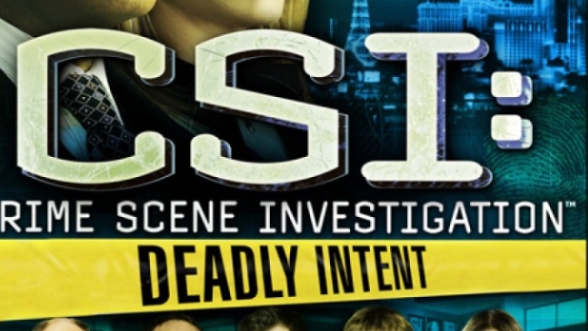It's set in Las Vegas!
The Ubisoft/Telltale CSI games are essentially episodes of the popular television show that you're asked to click through. That is what they want to be, and that is what they are. The genre that they express themselves in is the first person graphic adventure, but it would be a mistake to believe that these are products that aim to cater to the hardcore adventure gamer, or the hardcore anybody. There's no dishonor in this, yet the across-the-board low marks that this series receives from game journalists indicates that it competes in an arena where it needs be qualified. Installments of CSI have firmly established themselves as offerings of five high-concept whodunits that strive to be cinematic, atmospheric and entertaining, with the gameplay simply being the means to that end. Anyone looking for realistic detective work, uncompromising difficulty, or an emphasis on pushing the technical boundaries of their gaming system would do well to look elsewhere.
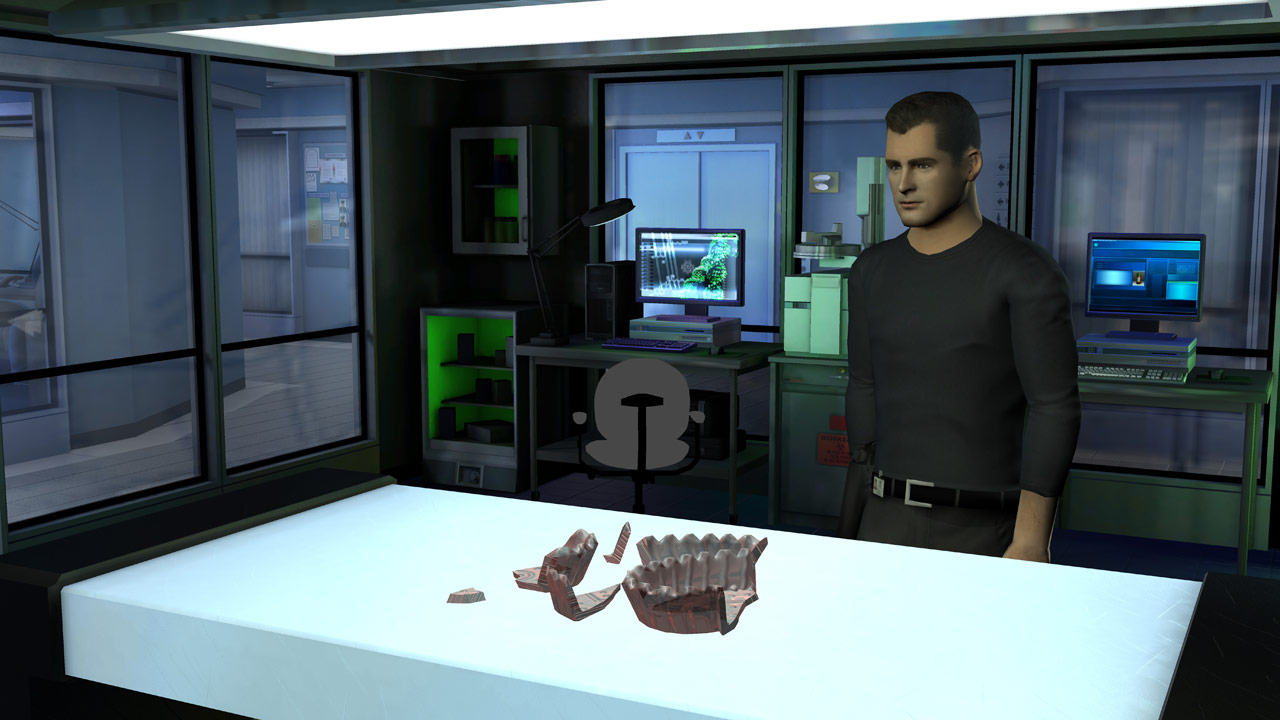
Let's review the history between studio and franchise. After a number of games by 369 Interactive, Ubisoft started recruiting Telltale to develop for the megahit TV license with 2006's 3 Dimensions of Murder, which they followed up with 2007's Hard Evidence. Returning from a break that saw the license handed off to Legacy Interactive for a very casual and very poorly receive take on the CSI: NY spinoff series, Telltale is back at the wheel with Deadly Intent, another Vegas-based outing which adheres slavishly to the successful template of their previous efforts.
As with Hard Evidence, there are some, almost inconsequentially minor, enhancements to go along with the new cases. The streamlined PDA interface returns and is more or less precisely how you remember it. Gathering evidence is also similar, although when an object you pick up bears something that is self-evidently supposed to be collected, such as a plainly visible fingerprint, the game now automatically performs the appropriate action. The lab has been given a slight makeover, and some of the analysis is now marginally more involved. Finding a match for a chemical substance, for example, is complicated by a simplistic matching puzzle involving absorption spectrums, and the microscope now has different zoom levels when scrutinizing evidence for tiny markings.
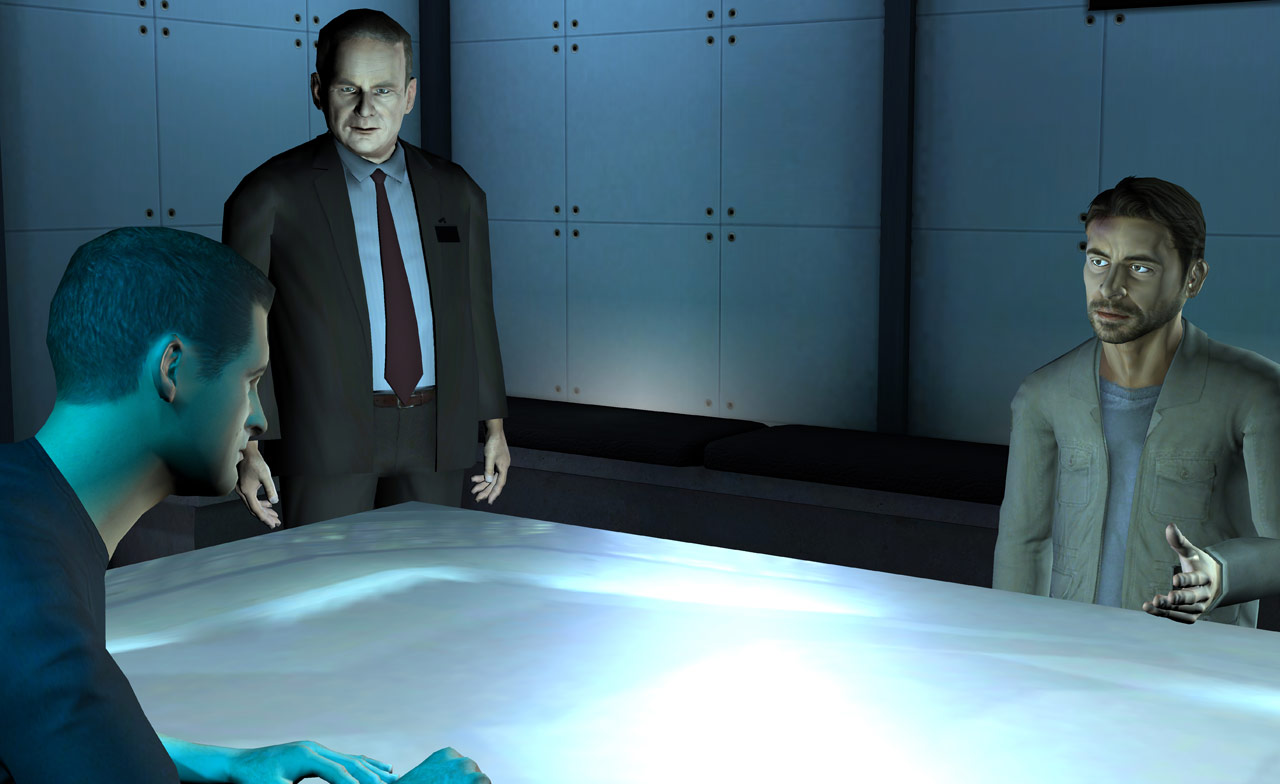
As always, these are whisper thin attempts to make you feel like you're accomplishing something on your own when you're really not. An equally superficial, but nonetheless enjoyable, new feature has to do with the newly icon-based dialog trees when interrogating suspects. Whenever a potential perp says something that might be a bald-faced lie, you have the opportunity of catching them in it by presenting a damning piece of evidence at the appropriate time. A similar idea is employed when Brass must be convinced that there's sufficient evidence for him to go bug a judge about a warrant. An implementation of this revamped dialog system was carried over into Sam & Max: The Devil's Playhouse, which many will mistake as the inauguration.
A slightly more robust hint system is also in place, an evolution Telltale continues from Wallace & Gromit and Monkey Island. While your CSI partner is still available to nudge you in the right direction when you're desperate, the game now dynamically attempts to help you out of a rut when it detects you're in one. With a frequency determined by the difficulty level you selected, you'll receive cell phone messages from a fellow CSI, a thinly disguised suggestion for what you should be doing next.
As with the previous games, Deadly Intent strives to mimic the show down to the helicopter footage of Vegas that transitions between key scenes. This time, Telltale goes as far as to add a little TV-like intro for the cast near the beginning of each case, and even puts in "commercial break" moments, where an FMV bumper suddenly punches you in the face when the story takes a dramatic turn. This is all executed to such cheesy effect (and is completely accurate to the source material, I suspect) that I must reconsider the desirability of a Telltale CSI: Miami adaptation. Ubisoft would never allow it, but a game with a more self-aware sense of cheesiness that is filled to the brim with Caruso one-liners would be pretty irresistible.
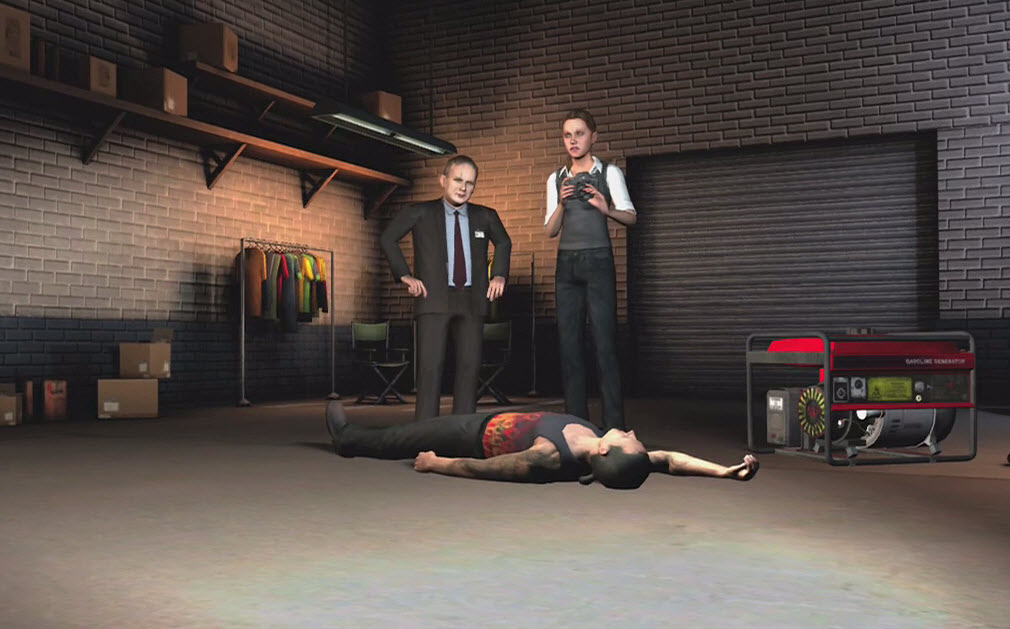
The cast has experienced a bit of a shake-up to reflect the latest season of the series, which has shed the characters of Gil Grissom, Sarah Sidle, and Warrick Brown in the time that's passed since the last Vegas game. The newcomers include Ray Langston (Laurence Fishburne) and Riley Adams (Lauren Lee Smith). The rest of the cast heard in the previous games return. This means that Catherine Willows is the only character not to be voiced by her on-screen actress, although her official ADR sound-alike performs in her stead.
As usual for a Telltale product, the voice acting is solid, with the suspects (mostly local Bay Area talent that you might recognize as NPCs in other Telltale/LucasArts games) as usual being the more memorable of the lot. It's particularly nice to see Andrew Chaikin back in the credits – the sleazy types he's so gifted at vocalizing are starting to become this series' best tradition. Now let's just pray Dave Grossman was lying with his latest grim tidings about Bone 3 and Chaikin will have a chance to once again supply the distinctive vocals of Phoncible P. Bone.
Visually, the game looks pretty much exactly like all the other ones, which is to say: pleasing, atmospheric environments, good animation, and passable character models. The game does benefit from some noticeable improvements in Telltale's engine, which means that characters have a mite more detail, lip-synching is a tad better, camerawork is slightly more sophisticated, and the issue of loading times has gone from improved to a non-issue. Like all the game's other enhancements, though, they feel pretty much like a raise that's just sufficient enough to keep up with inflation. The art direction remains wholly unaltered. My only issue would be the fact that an environment or two looked distractingly similar, if not identical, to environments in 3 Dimensions of Murder, but, whatever.
As far as replayability, the game features an extensive report card for your performance in each case, but as far as I could tell there's no real reward for the so-named Achievements other than personal gratification, meaning the unlockables introduced in Hard Evidence have not become a mainstay - regrettable for lovers of blackjack simulators. In lieu of the bug hunting and "Thoroughness Points," Deadly Intent satisfies the itch for non-essential grind by way of little side quests. At some point during each investigation, a CSI who is working on another case asks for your assistance in performing some lab work. You are also given a percentage grade in categories like Thoroughness and Cunning, but the evaluation is strictly there for the folk who need to achieve a hundred percent on everything, regardless of how nominal and pointless.
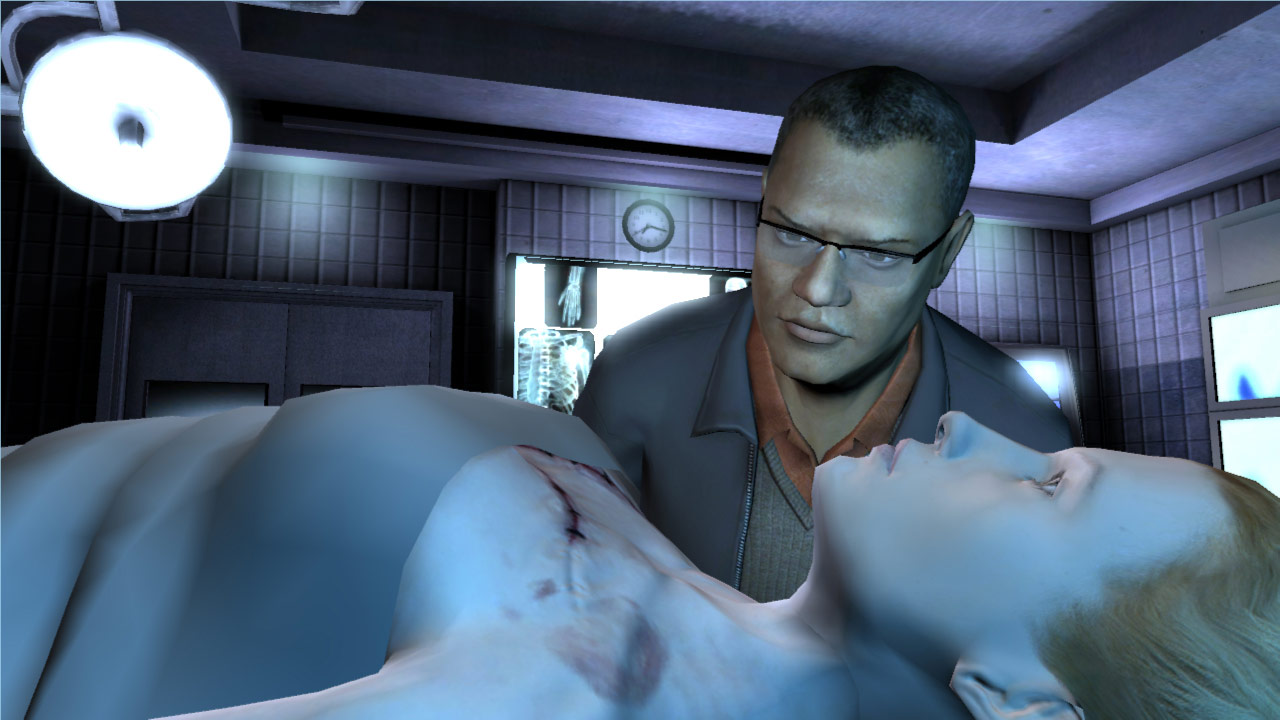
This is the only real bone that's thrown in the direction of people who crave a tedious challenge, because even with all hints turned off, getting stuck in the game is never a matter of not knowing what to do next, but rather of needing to re-comb a scene for a piece of evidence you glanced over. The stories themselves, the concoctions of internal Telltale writers as well as contributors for the actual show and the the actual reason you'd buy the game, are as well crafted as those in the previous installments.
As with Hard Evidence, the game is available for the Wii and Xbox 360 in addition to the PC. Judging from the previous game rather than hands-on experience with all three versions of this one (I played the PC version only), it would be my assumption that the console ports are identical in content, with the Wii having the edge on controls (it being a point ‘n click game, after all) and the 360 having the edge on the graphics – to the nonexistent degree that it matters with this game. I would also surmise that some of the technical gripes that were present in the Wii Hard Evidence may be smoothed out by comparison here, but that's only speculation. Note that a Nintendo DS game also dubbed Deadly Intent was also released by Ubisoft as a companion product to this, but despite the shared title it is a completely separate project without Telltale's involvement. Hence, we care not.
If I imagined myself as avid fan of the CSI TV show who has no strong background in games, it's not hard for me to understand why this series has been as consistently successful as it has. If, like me, you like adventure games and don't mind the idea of one that is more concerned with telling an entertaining story than anything else, then this game is for you as well, and makes for an enjoyable, non-demanding experience that's perfect for a late night.
CSI: Deadly Intent is ultimately more of the same, but chances are that's exactly what you want if this game was on your radar, and if it wasn't you don't care in the first place. Telltale and Ubisoft's refusal to change up the formula is as difficult to lambast as it is to applaud. At the end of the day, the pleasures of these games come from the fun of getting to play through five diverting, over-the-top, and sharply written murder cases in the vein of the show, whose brand name alone is what gets its interactive adaptations funded. Those pleasures are still derived.
A review by Jason, who thinks deadly intentions aren’t everything.

Pros: Exactly the same as Telltale’s two previous CSI games.
Cons: Exactly the same as Telltale’s two previous CSI games.
